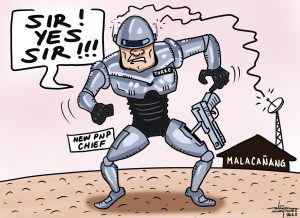It’s funny how the Ebrado’s Tailoring signage hasn’t been knocked down after its thriving business closed down many decades ago.The muted store signage is still up high on the front side of a building along Anda St, its sorry appearance looking drab and dreary by the passing of time. I was still in grade school, just nearing my 10th birthday when my mother brought me to this shop. A smiling, affable middle aged man had me taped measured for my first ever trousers and thenceforth, my short pants were gradually pushed out of my cabinet. Ebrado’s gained high marks in popularity in the early 50s following the steps of an earlier post-war famous Chiew Ning’s Tailoring as handed down by word of mouth from a much older generation.
Before the RTW business concept trailblazed and started to gain ground in the country, haberdashery/ tailor and dress shops had been the most practical way of making clothes wear that really fits a person to a tee.This personalized and manual labor-intensive way of fashioning shirts and slacks was the essence of clothes wear in the same way that the famous Biema’s (still in operation) Avelino’s, Coing’s, Aviola’s (all extinct) along San Pedro and Magallanes Sts were into customized hand- crafting shoes and footwear. But the RTW was more practical since there was no waiting time for a customer to wear his desired clothes. So, up to the mid 70’s, tailoring and dress shops were gradually tapering off to give way to the more popular RTW, which the hundreds of department stores found economically beneficial by handling the huge volume of sales to the public.
San Pedro St had always been the toniest part of town, glowing and glittering during Christmastime with holiday shoppers in a state of frenzy, rummaging shops for presents. In the late 50s Centro de Modas, a tailor shop in San Pedro St. suddenly rose to fame in fashioning the latest trend in shirts and slacks for teens and students. This was around the time when the ubiquitous, smooth and downy fabric Ban Lon, the rainbow colored floral Hawaian shirts and imported Marzotto slack material became a fad that gave one a little upward thrust in social standing. In the same breath, a pair of the NBA official basketball shoes, the famed Converse Chuck Taylor, a Hush Puppies casual footwear, a Florsheim or Esco dress shoes resonated with opulence and affluence for the well -heeled folks. Elpo, Custom Built, Robertson and Marcelo rubber shoes were usually snapped up by the middle and lower middle class folks.
A short hop from City Hall along San Pedro St was the elegant Raymundo’s ManilaTailor, home of high quality fashion designer-tailors that especially catered to the prominent businessmen and professionals of the city. On the Claveria St side of town, Paramount, ( near Life Theatre) Juberz (haberdashery) and Mallari’s Tailoring shop shone bright in their own spheres. Mallari’s gobbled much of the middle class requirements and delivered huge quantities of school, sports and ROTC uniforms. Mallari, the entrepreneur was also an active sports enthusiast who formed and sponsored a champion basketball team in Davao in the late 50s.
Valmores Tailoring near the corner of Rizal and Claveria St started to make some noise and became an instant success among students and teeners in the early 60s until Shields Tailoring along Bolton St, (across UM campus) grabbed higher honors and hit the big time in tailoring in the early 70s. A close, friendly neighbor of Valmores was Minda Trading, a warehouse-like store at the corner of Rizal Extension, the side of the building protected by a moat- like drain channel. It had a warm ambience and its showroom was bursting at the seams with unlimited choices of the best local and imported fabric and textile material for all occasions. For decades Minda Trading remained in high esteem and was well respected in Davao City’s business community. So sad it had to close due to the unpredictable shifting sands of time and circumstance.
To be continued

